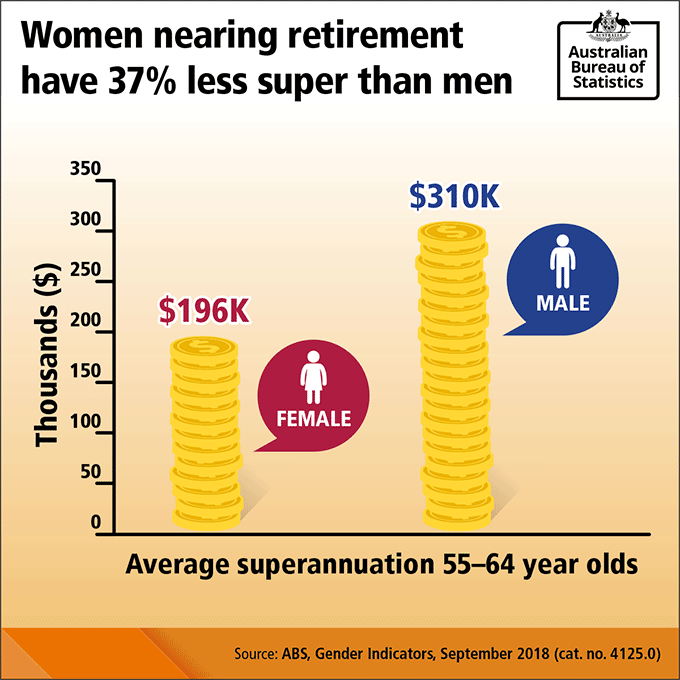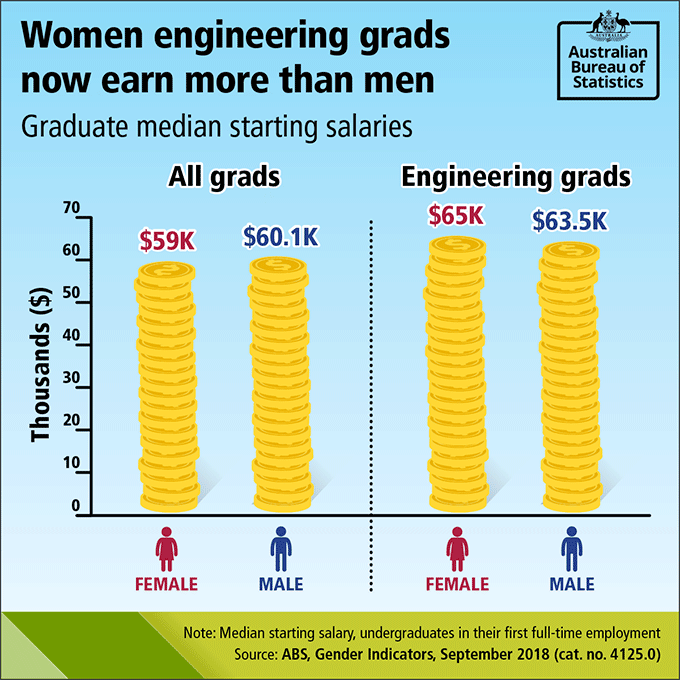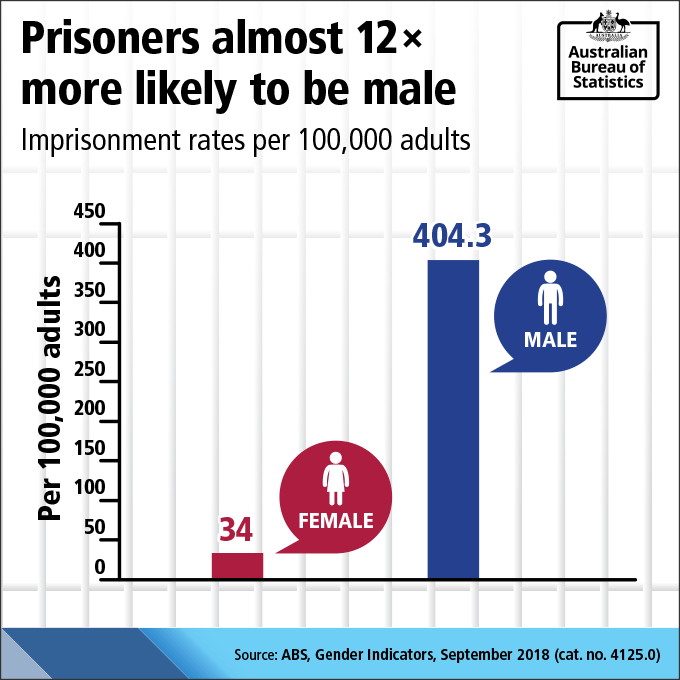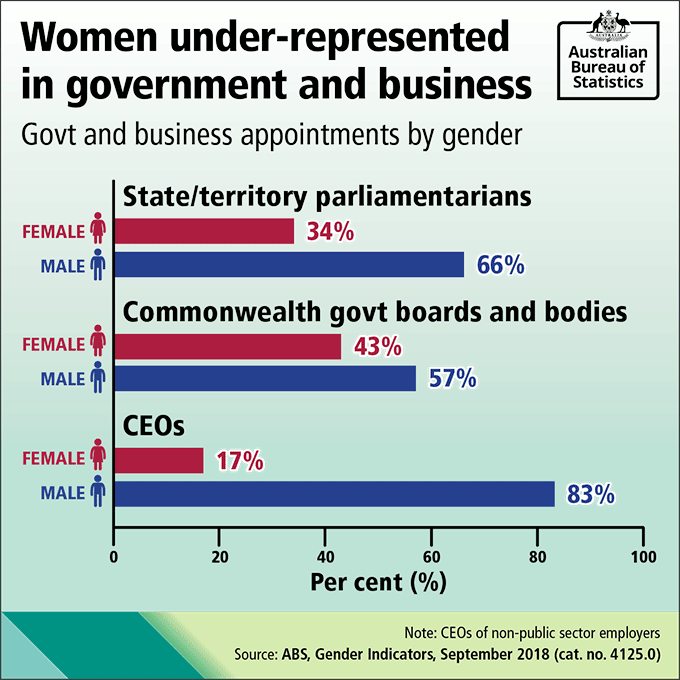SELECTED HIGHLIGHTS: DIFFERENCES BETWEEN AUSTRALIAN MEN AND WOMEN
While over 80% of Australian men and women reported they were satisfied with their lives, there are significant differences in their health, social and economic characteristics, and their work and family balance.
Economic Security: Women trail men in three key measures related to economic security.
- Employment: Fewer women are in the labour force than men, and those in the labour force are more likely to be in part-time and casual employment, and more likely to be under-employed than men.
- Income: women earn less overall, averaging a rate ratio of .89 of male earnings (non-managerial adult hourly ordinary time cash earnings).
- Wealth: Women aged 55-64 have much less superannuation than men of the same age, however rates of home ownership are similar.
 Education:
Education: Overall, women participate more in education.
- More women than men attain a bachelor degree, with most women likely to qualify in management and commerce or society and culture. Men are most likely to qualify in management and commerce or engineering and related technologies.
- Female graduates earn less than male graduates overall, with median starting salaries of $59k and $60.1k respectively, and they earn less in 15 out of 19 key industries.
- Bucking the trend, female engineering and related technologies graduates have a higher starting salary than their male counterparts for the first time in 2017: $65k compared with $63.5k.
 Health:
Health: On average, women live longer than men (84.6 years compared to 80.4 years) and have lower rates of risk factors.
- Risky levels of drinking are dropping for both men and women, but men are still more than twice as likely to exceed the drinking guidelines as women.
- Fewer men and women are smoking overall, but again, men are more likely to smoke than women.
- While men are much more likely to be overweight, levels of obesity are similar for men and women. Women of all ages are more likely to be sedentary.
- Women are slightly more likely to suffer from mental or behavioural conditions, with young women having twice the rate of reported anxiety of young men. However, men are more than three times as likely to take their own lives.
- While the most common cause of death for both women and men is ischaemic heart disease (which is declining), death rates for dementia are increasing and are higher for women.
Work and Family Balance: Women are still the primary carers in Australia.
- Almost all primary parental care leave for non-public sector employees was taken by women. Women employees in all sectors, however, were slightly more likely than men to be employed with no leave entitlements.
- Twice as many women as men provide primary care to a person with a disability. Of these women, 13 percent are employed full-time, 27 percent part-time, and 57 percent are not in the labour force.
- While men and women averaged the same hours for paid and unpaid work overall, men spent twice as long as women in employment related activities and women spent twice as long as men in unpaid work (particularly domestic activities and childcare).
Safety and Justice: The imprisonment rate for men is nearly twelve times that of women.
- While men and women experience similar rates of physical or threatened violence, women are over four times as likely to be sexually assaulted.
- Women are more likely to be sentenced for illicit drug offences, fraud, deception and related offences; offences against justice and theft and related offences, while men are more likely to be sentenced for acts intended to cause injury, sexual assault and related offences, unlawful entry with intent, and robbery, extortion and related offences. They are both on par with being sentenced for homicide and related offences.

Democracy, Governance and Citizenship: While women are participating more in education, particularly tertiary education, they are under-represented on boards, as CEOs, ministers and parliamentarians, judges and justices.
- Over the past decade, there has been an increase in female appointments in the senior executive service managers of the Australian Public Service (from 35 to 43 percent).
- There has also been an increase for female Federal Circuit Court Judges over the past decade, from 28 to 43 percent.

 Print Page
Print Page
 Print All
Print All